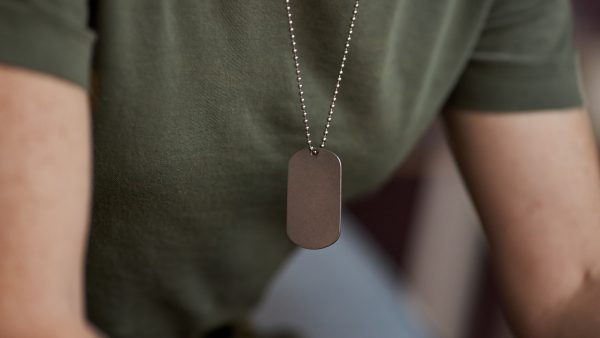Looking for Expert-Level VA Claim Answers?📱Call Us Now! 737-295-2226
In this post, we will be exploring the automatic 50 PTSD rating in detail.
Here’s a secret…no PTSD rating is considered “automatic” because a veteran must fit the PTSD rating criteria within the law, which is based on the level of occupational and social impairment required to meet the 50 VA disability for PTSD.
However, in accordance with 38 CFR PTSD §4.129 Mental Disorders Due to Traumatic Stress:
“When a mental disorder that develops in service as a result of a highly stressful event is severe enough to bring about the veteran’s release from active military service, the rating agency shall assign an evaluation of not less than 50 percent and schedule an examination within the six month period following the veteran’s discharge to determine whether a change in evaluation is warranted.” (Authority: 38 U.S.C. 1155)
Think you deserve a 70 VA disability rating for PTSD? Click HERE to read now.
Maybe even a 100 VA disability rating for PTSD? Click HERE to read now.
PTSD claims are among the easiest VA disability claims to win
According to the easiest VA claims to win data, PTSD is in the top 3 across all groups of veterans.
23.7% of all VA compensation claim recipients for PTSD have a 30 PTSD rating.
25.9% of all VA disability recipients for PTSD have a 50 PTSD rating.
28.0% of all VA claim recipients for PTSD have a 70 PTSD rating.
And 13.1% of all VA disability claim recipients have a 100 PTSD rating.
eCFR Title 38, Part 4, the Schedule for Rating Disabilities lists the general rating formula for all mental disorders, including PTSD.
PTSD is rated on a scale from 0 percent to 100 percent, with breaks at 10, 30, 50, and 70.
The automatic 50 PTSD rating has less severe occupational and social impairment criteria and includes symptoms as follows.
Should I apply for PTSD claim? Click HERE to read now.
50 PTSD Rating criteria
“Occupational and social impairment with reduced reliability and productivity due to such symptoms as: flattened affect; circumstantial, circumlocutory, or stereotyped speech; panic attacks more than once a week; difficulty in understanding complex commands; impairment of short- and long-term memory (e.g., retention of only highly learned material, forgetting to complete tasks); impaired judgment; impaired abstract thinking; disturbances of motivation and mood; difficulty in establishing and maintaining effective work and social relationships.”
Whereas the 30 PTSD rating is strikingly less severe, and includes the following symptoms:
30 PTSD Rating criteria
“Occupational and social impairment with occasional decrease in work efficiency and intermittent periods of inability to perform occupational tasks (although generally functioning satisfactorily, with routine behavior, self-care, and conversation normal), due to such symptoms as: depressed mood, anxiety, suspiciousness, panic attacks (weekly or less often), chronic sleep impairment, mild memory loss (such as forgetting names, directions, recent events).”
A big misconception among veterans is that you need to meet ALL the subjective symptoms tied with a certain rating criterion for PTSD in order to get that rating.
This is not the case veterans!
The Rating Veteran Service Representative (RVSR) will consider all the evidence of record, and normally will assign the VA rating for PTSD that includes the “preponderance of the symptoms.”
For example, if a veteran has 3 of the symptoms from the 30 rating for PTSD criteria and 5 of the symptoms from the 50 PTSD VA rating criteria, the rating agency shall assign the higher rating, unless evidence of record contradicts this subjective assessment.
The opposite is also true.
For example, if a veteran has 5 of the symptoms from the 30 rating for PTSD criteria and 3 of the symptoms from the 50 PTSD VA rating criteria, the rating agency shall assign the lower rating, unless evidence of record contradicts this subjective assessment.
Two Rules for PTSD VA Ratings
According to §4.126, evaluation of disability from mental disorders, the RVSR (VA Rating Official) is required to consider these two rules:
(1) When evaluating PTSD, the rating agency shall consider the frequency, severity, and duration of psychiatric symptoms, the length of remissions, and the veteran’s capacity for adjustment during periods of remission.
The rating agency shall assign an evaluation based on all the evidence of record that bears on occupational and social impairment rather than solely on the examiner’s assessment of the level of disability now of the examination.
(2) When evaluating the level of disability for PTSD, the rating agency will consider the extent of social impairment but shall not assign an evaluation solely on the basis of social impairment.
How to File a VA Claim for PTSD
If you think you deserve a VA rating for PTSD, or you think you deserve a higher rating for PTSD, you should read “How to File a VA Claim for PTSD” now.
Deserve a HIGHER VA Rating? WE CAN HELP.
Join our premier education-based membership program, VA Claims Insider Elite, connect with an expert-level Veteran Coach (VC) within minutes, and finally get the rating you deserve. Click the button below to get started.
About the Author

Brian Reese
Brian Reese is a world-renowned VA disability benefits expert and the #1 bestselling author of VA Claim Secrets and You Deserve It. Motivated by his own frustration with the VA claim process, Brian founded VA Claims Insider to help disabled veterans secure their VA disability compensation faster, regardless of their past struggles with the VA. Since 2013, he has positively impacted the lives of over 10 million military, veterans, and their families.
A former active-duty Air Force officer, Brian has extensive experience leading diverse teams in challenging international environments, including a combat tour in Afghanistan in 2011 supporting Operation ENDURING FREEDOM.
Brian is a Distinguished Graduate of Management from the United States Air Force Academy and earned his MBA from Oklahoma State University’s Spears School of Business, where he was a National Honor Scholar, ranking in the top 1% of his class.




